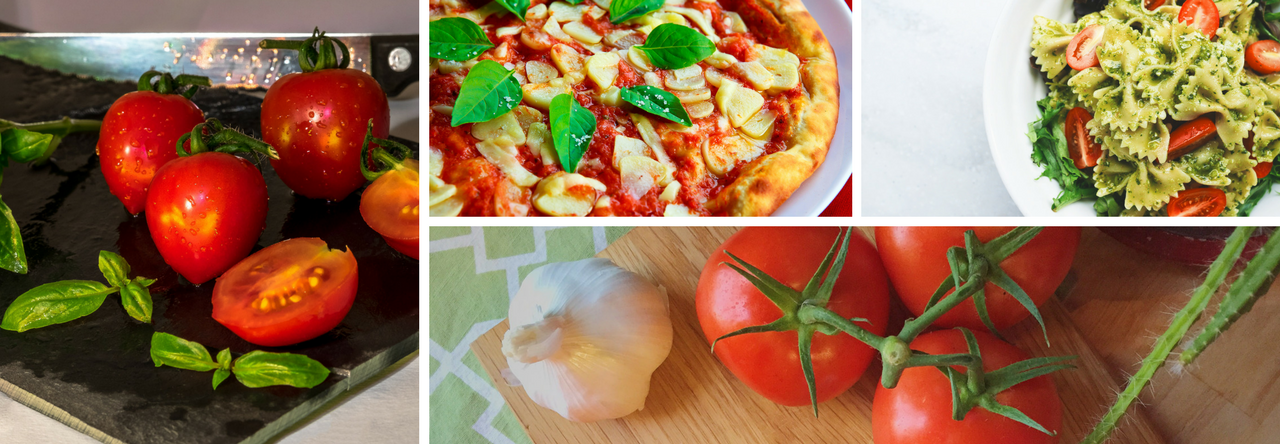Cooking Philosophy
We southern Italians like to focus on simplicity in the food we prepare and serve. That means that we also try to keep the servings simple. You may have noticed that Italians serve meals as a series of piatti, or courses. Each course focuses on just one or two small servings of food. For example, we will serve an antipasto of crostini or salami, then clear the plates and serve a primo piatto which is usually a pasta or rice dish. Before we serve the primo piatto (first course), we clear away the antipasti. We do that so that we can focus on the flavors of the food in this new piatto.
Because we serve the food in multiple courses, that means that I often make the cooking process a family event. People come into the kitchen and eat the antipasto while I prepare the primo piatto. Conversations in the kitchen become infused with the spirit of mutual cooperation and curiosity, and by the time we go to the table for the first course, we’ve often shared lots of laughter and friendship. A question about a recipe naturally engenders a conversation about cooking process, which leads to lots of other discussions.
Video – The Doctor and the Diet
I love the way we serve one dish at a time because it means we can have many conversations with the people with whom we are sharing a meal. And it also means that we can concentrate on each dish as it comes, without the distractions of other courses.
Basic/Essential Ingredients for Italian Cooking
Pasta
Pasta is the most famous type of recipe from Italy. There are hundreds of pasta recipes, but I’d like to share some of my favorites. Most of the recipes I use are traditional Italian recipes and some of them I have modified slightly. I’ve created a few recipes from scratch.
There are two basic rules to having a good pasta:
- The pasta has to be al dente, which means the pasta is kind of hard – it certainly does not stick to the wall, as you hear sometimes
- Do not overwhelm the pasta with condiment. Too often, in Italian-American restaurants, they serve pasta swimming in fat, tomato, extra sauce…instead, there has to be a moderate amount of condiment so you can appreciate both the pasta and the condiment.
This is also why you can eat pasta without getting fat. The fat does not come from the pasta- it comes from what you put over it, so don’t put too much.
Get pastas like Rummo, De Cecco, Seggiano, or other whole-grain pastas imported from Italy.
Why Are There So Many Different Pasta Shapes?
The reason Italian pastas have so many different shapes is because they “hold” the sauce differently, providing a different taste and texture for each dish. In general, short pasta like rigatoni holds the texture better, so if you are cooking for a lot of people, it’s easier to use rigatoni. If you substitute long pasta for a large group is it easier to overcook it.
A serving consideration is that if you have a stand-up meal, a short pasta is easier for guests to handle.
Capellini, or angel hair, is the most difficult pasta to cook because it is very easy to overcook it, and then it become a glue that nobody likes!
Some good pasta “shapes” to have in your kitchen are:
Spaghetti
Capellini, or angel hair
Orecchiette (“little ears”)
Rigatoni
Essential Ingredients
Salt
Black pepper
Red pepper
Herbs (fresh if possible), especially basil, rosemary, oregano, and parsley
Pomì or other good Italian canned tomatoes (buy the chopped or whole tomatoes, never the strained)
Extra-virgin olive oil (Italian preferred, of course!)
A few different pastas from Italy
Anchovies
Capers
Olives (brine)
Fresh garlic
Red onion
Parmigiano and pecorino cheeses
If you have these ingredients in the kitchen you are ready to cook almost any type of pasta. For example, you can make a great simple and fresh-tasting tomato sauce that everyone will love. You can make spaghetti al’alio i olio with anchovies, the famous cacio e pepe, and many variations of these dishes.

